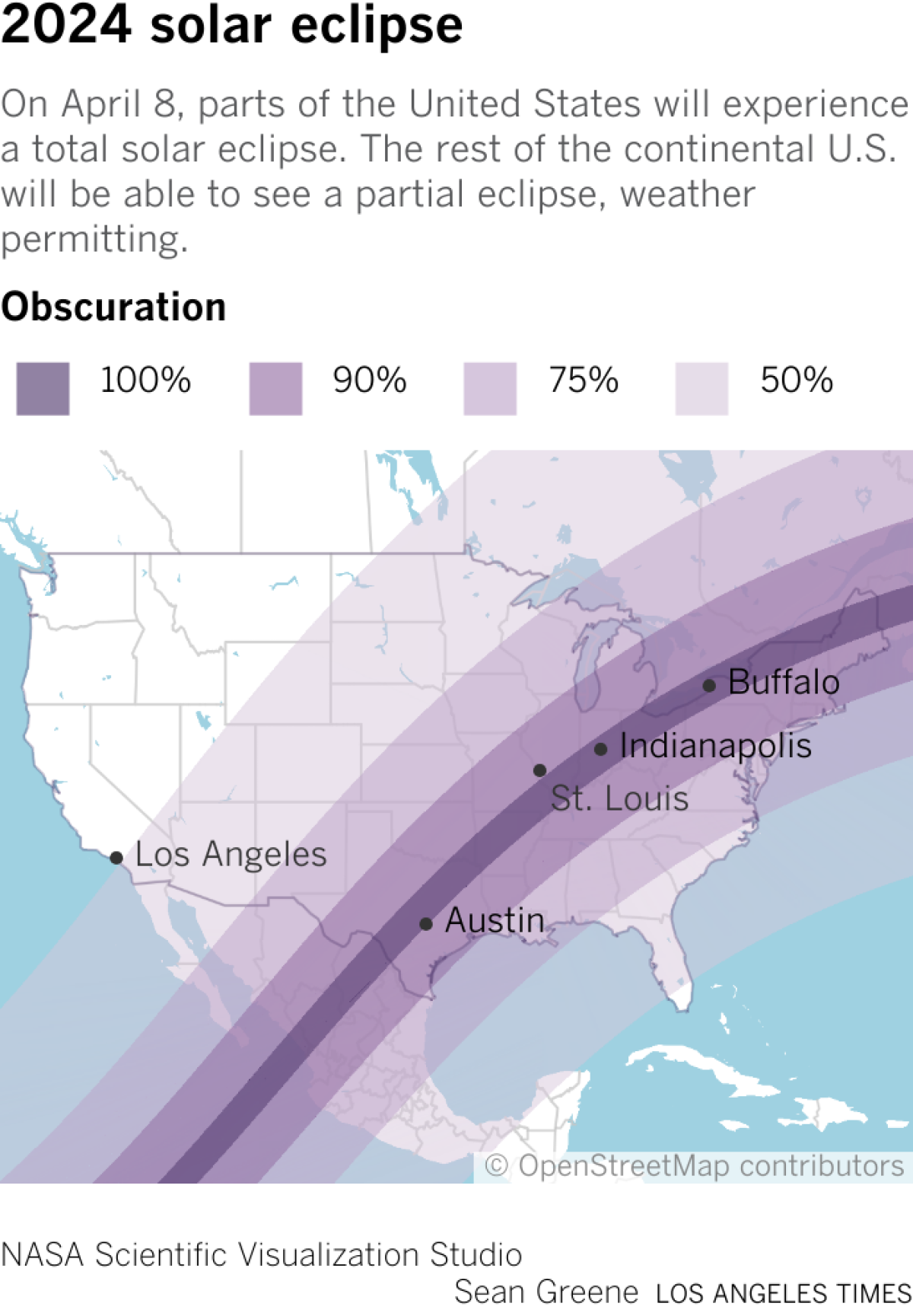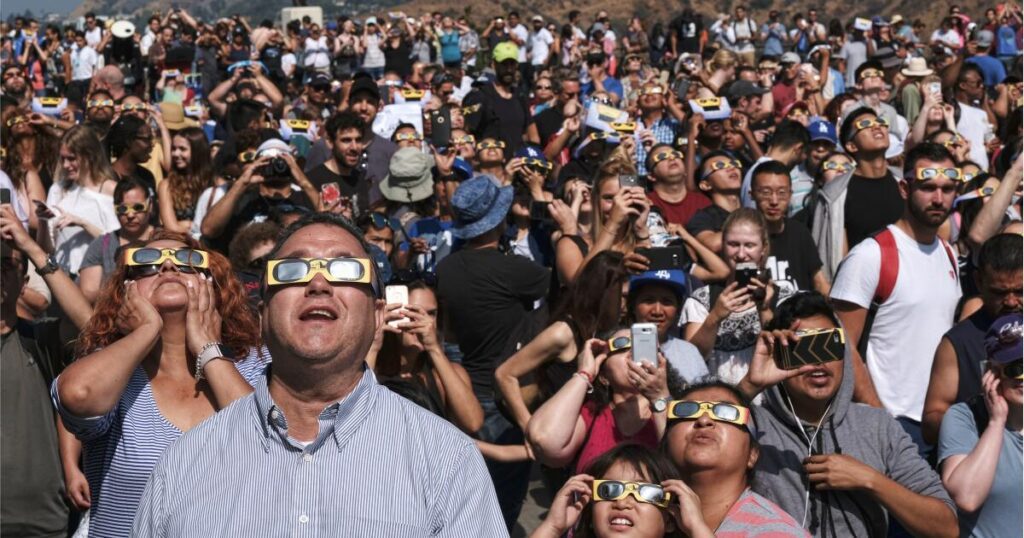It's finally here: the great eclipse of 2024.
The last total solar eclipse across the contiguous United States was in August 2017, according to NASA. Another one would not cross again for 20 years.
Crowds of people travel to the Midwest and East, where the eclipse will be most dramatic.
Although California will not witness a total eclipse, there is still plenty to see.
Here is a quick guide:
basics
Totality: Midday darkness will fall over part of the states, including Texas, Illinois, Ohio and New York – but there won't be any “total eclipse” in Los Angeles.

Partial eclipse: In Los Angeles, the moon will cover about half of the sun, and in San Francisco, it will be a third.
The northern parts of the state will witness a smaller amount of the eclipse, while cities located in the south will see a greater amount.
Timing
In Los Angeles, the event begins at 10:06 a.m. The sun's obscuration will be clear by 10:39 a.m. and will reach its peak at 11:12 a.m., and by 12:22 p.m. it will end, according to the Griffith Observatory. .
There will be lots of events locally.
Safety glasses and phones
Looking up: The first rule of a solar eclipse is never to look at the sun without specialized eclipse glasses or a solar viewing device. It's not safe. If you look at the eclipse without protection, it will cause severe eye injury, according to NASA.
Use appropriate eyeglasses: Here are some safety and eyeglasses tips.
Taking pictures: Even taking pictures on your phone can pose risks to your eyes. Accidentally including the sun in the photo for a quick shot isn't actually a camera safety issue. But experts have advice.
Finally…
Enjoy your day! Rare moments can bring people together. At least some scientists think so.
Of course they can also spark end-time conspiracies (please, ignore those!).
